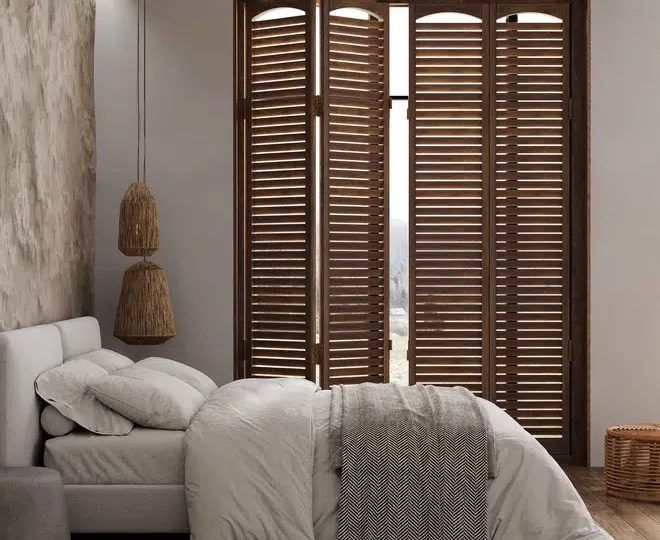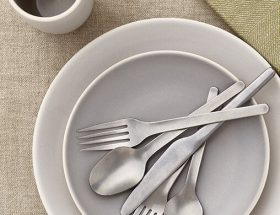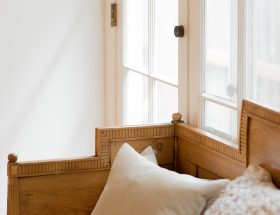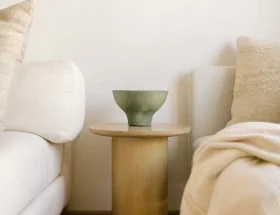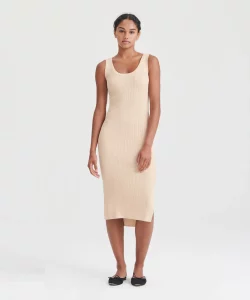As much as I love to be outside, I’ve always found my air-conditioned home quite comfortable after an outdoor adventure—especially during the hot, buggy, and rainy months. Unless I caught wind of a yucky smell wafting from a full trash can or was trying to air out the new furniture or fresh paint smell, I’d never really given much thought to the quality of the air we breathe inside our house.
The other night, however, as my family sat down to eat under the hanging light fixture above the table, we noticed a floating object inching closer to our lazy Susan full of untouched dinner items.
“Ew, what is that?” my daughter exclaimed.
“Probably just a little dust,” said my husband, ”We are breathing stuff like that in all the time.”
We batted the unknown object away from our food and carried on.
The next morning, as I drank my cup of coffee, I found myself paying closer attention to the morning light streaming through the window. Like always, it was full of movement. But this time, it no longer had the dreamy allure. Instead, all I could think was: Yikes, am I breathing all that crud in?
“All I could think was: Yikes, am I breathing all that crud in?”
Humans spend a significant amount of their time indoors—it’s said up to 90%. While we still spend time in commercial spaces, buildings, and schools, a good part of that time is spent in our homes. Nowadays, work-from-home careers are common. COVID-19 always feels looming. We have fur babies. We cook meals. We burn candles. We track dirt in. We use cleaning, beauty, and hair care products. We literally shed our own skin. This can play a role in indoor air quality, which can be up to five times more polluted than outdoor air—even when there aren’t record-setting heat waves, rain events, smog, and wildfires.
So, how important is our indoor air quality to health?
As a part of my research, I connected with Geoff Dunlop, Director of Marketing at Brondell, a climate-forward company designing products that clean our home environment. He told me that “dust, pet dander, pollen, tobacco smoke, and various molds are commonly found in indoor spaces, along with cooking odors, gasses, and volatile organic compounds (VOCs) from furniture, carpeting, and personal care products.”
“Poor indoor air quality can lead to adverse health impacts that include irritation of the eyes, nose, and throat, headaches, dizziness, fatigue, and even respiratory and heart disease, as well as the potential for cancer.”
The Environmental Protection Agency (EPA) says poor indoor air quality can lead to adverse health impacts that include irritation of the eyes, nose, and throat, headaches, dizziness, fatigue, and even respiratory and heart disease, as well as the potential for cancer. Microplastics have also been found in our indoor air, and can accumulate in our lungs.
Since I work from home, controlling my indoor air quality has become a top priority as part of my mission to create a healthy home ecosystem. Investing in a portable air filtration system is one of the best ways to improve indoor air quality.
One study showed that advanced air filter systems can efficiently remove airborne particulates, resulting in significant health benefits, especially for those with asthma and cardiovascular disease. And according to Dunlop, air purifiers also reduce exposure to indoor pollutants like radon, asbestos particles, and airborne illnesses which can improve sleep, boost immunity, and may increase life expectancy.
Sign me up!
How Do Indoor Air Purifiers Work?
When it comes to clean air, the size of the particles in the air matters. We may easily observe larger airborne particles like hair, dust, pollen, and sometimes mold that are about 10 microns. But spotting smoke, bacteria, and viruses is more difficult because they are teeny-tiny—as in .3 to 1 micron or smaller.
“Though these pollutants cannot be seen by the naked eye, breathing them in can cause a range of health issues, including allergies, asthma, and more,” says Dunlop.
“Though these pollutants cannot be seen by the naked eye, breathing them in can cause a range of health issues, including allergies, asthma, and more.”Geoff Dunlop, Director of Marketing at Brondell
Air purifiers are designed to attract and trap airborne particles as they are sucked into a filter media. What exhausts out the other side is fresher air, free of health-affecting particles that would otherwise be breathed in and potentially accumulate in our body and cause yucky symptoms.
HEPA (High-Efficiency Particulate Air) filter systems contain layers of filters so they can trap both large and tiny particles. These tend to be perfect for households with furry family members, and they are very efficient at capturing and controlling smoke particulates, bacteria, mold, and dust.
In addition to trapping particles big and small with a HEPA filter, some air purifiers can also capture and treat vapors and sanitize the air by killing viruses using technologies like activated charcoal, ionization, and ultraviolet light before releasing the air back into the home environment. These systems may be pricier but offer significant benefits when your household contains immune-compromised adults, babies, small children, or elderly members, as they help ward off germ exposure and clean irritating particles from the air.
How Many Filters Do I Need To Clean My Air?
Whole-home air purification, which uses ductwork and offers filtration media at supply and return vents in a conditioned home, is convenient and ideal for clean indoor air. However, these measures are expensive and only sometimes attainable.
“An air purifier purchase is personal and should reflect the amount of space you want to impact,” offers Dunlop.
“Strategically placing portable filter units throughout the home where you and your family spend the most time can offer significant benefits.”
Strategically placing portable filter units throughout the home where you and your family spend the most time can offer significant benefits. They have a small footprint and are light enough to move from room to room. There are even options for desktop units.
Brondell’s Horizon Purifier is the perfect example, as it is a budget-friendly option that still does a great job and can be easily moved from your home office during the day to your bedroom at night while you sleep.
However, if you want the golden ticket of air filters, you could invest in Brondell’s Pro Sanitizing Air Purifier (Good Trade readers get 50% off with code SMOKEFREE50). The Pro cleans the air in rooms up to 1655 square feet. It uses a HEPA-grade filter, UV light, and a plasma generator to kill microorganisms and claims to eliminate 99.9% of COVID-19-causing SARS and multiple strains of influenza.
“Many systems are designed to run around the clock but still not use too much energy or skyrocket your electricity bills.”
Many systems, including those above, are designed to run around the clock but still not use too much energy or skyrocket your electricity bills. This is thanks to technology that senses air quality and kicks in when needed. As for concerns about the noise pollution older purifier models cause, the new models tend to be quieter and almost soothing. Many filtration units even offer sleep modes that are almost noise-free.
For more of our air purifier recommendations, visit our guide to the best home air purifiers for allergies and pollution.
More Tips To Help Keep Indoor Air Clean
- Vacuum your home a few times a week, especially carpets and rugs that tend to trap more dust and dander.
- Use a damp cloth instead of a dry one to trap particles instead of pushing them into the air.
- Choose non-toxic building materials when doing a renovation.
- Purchase formaldehyde-free furniture, carpets, and home goods.
- Use your exhaust fan when cooking to draw out odors and smoke.
- Choose beeswax or soy-based candles, as petroleum-based paraffin wax gives off fumes and leaves soot.
- Grab yourself some indoor plants. They not only look amazing inside, but they also clean the air.
- Wash bedding once weekly if you can, and occasionally vacuum your mattress.
- Brush your pets outside.
- Avoid dry cleaning. If you have to dry clean something, let it sit outside for a little bit to release any remaining gasses before hanging it in your closet.
Becoming more aware of indoor air quality was a significant first step for me and my family. I decided to invest in a few small portable air purification units for the bedrooms and also one where we spend the most concentrated time in the house. But at the end of the day, I had to remind myself there is only so much we can do to control air quality, whether we’re inside or out. The good news is the human body is a fantastic machine, composed of systems designed to protect us from all that ails, including occasional poor air quality.
“It is important to do your best to maintain cleaner indoor air using whatever methods are available to you.”
The takeaway: During times when you are stuck inside due to poor outdoor air quality, inclement weather, or for any other reasons, it is important to do your best to maintain cleaner indoor air using whatever methods are available to you. And when the air quality is good, nothing beats stepping outside for a breath of fresh air.
Randi Donahue is a freelance writer who lives on the Gulf Coast of Florida and is fortunate to live right next to a glorious nature preserve and a few miles from a white sandy beach. She and her family are passionate about nature, health & wellness, and sustainable living and believe the path to a healthy and prosperous life requires authenticity, kindness and a whole lot of fresh air.
RELATED READING

9 Sustainable Office Desks (That Aren’t From IKEA)
DECOR

How To Upgrade Your Rental Home With Peel & Stick Wallpaper
DECOR

99 Etsy Shops We Love From Small Makers
DECOR

